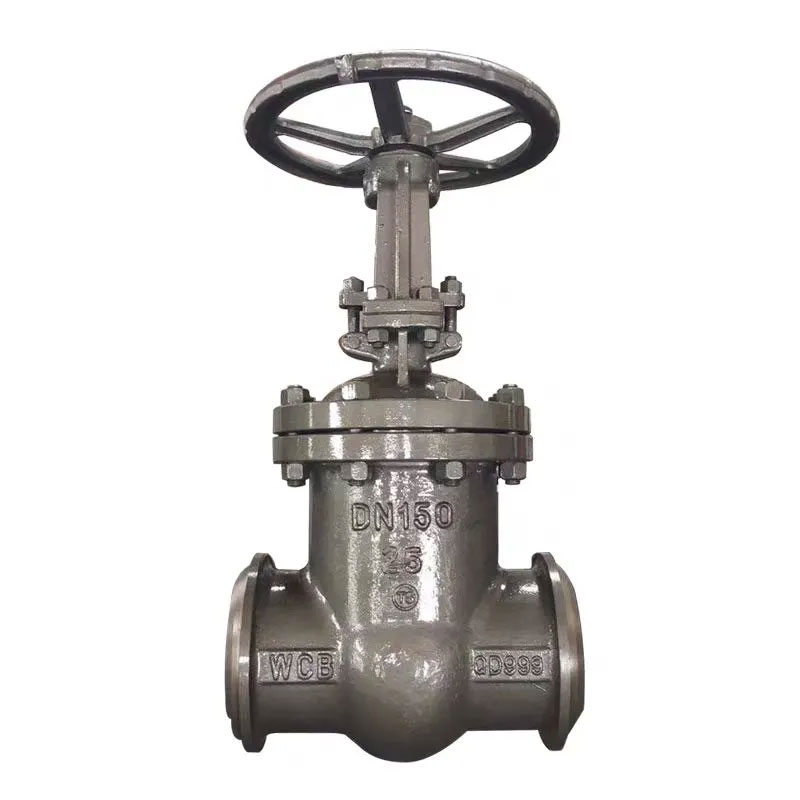Working Pressure and Temperature Range of Flange Ball Valves
2025-06-23
Flange ball valves are widely used in various industries due to their versatility, durability, and reliable sealing capabilities. These valves are particularly advantageous for controlling the flow of fluids in pipelines, making them a crucial component in industries such as oil and gas, water treatment, chemical processing, and HVAC systems. One of the key parameters when selecting a flange ball valve is understanding its working pressure and temperature range. These parameters define the operational limits of the valve and help ensure that the valve is suited for a particular application.
1. Working Pressure of Flange Ball Valves
The working pressure of a flange ball valve refers to the maximum pressure that the valve can handle during operation without compromising its structural integrity or causing leakage. This parameter is typically specified by the manufacturer and varies depending on the valve’s material, size, design, and intended application.
Pressure Ratings
Flange ball valves are generally designed to meet standardized pressure classes that are defined by international organizations such as the American Society of Mechanical Engineers (ASME) or the International Organization for Standardization (ISO). These pressure classes determine the maximum pressure that the valve can withstand at a given temperature.
The most common pressure ratings for flange ball valves are:
Class 150: Suitable for low to moderate pressure applications, typically up to 150 psi (pounds per square inch) at ambient temperature.
Class 300: Designed for medium-pressure applications, usually up to 300 psi at ambient temperature.
Class 600: For high-pressure applications, up to 600 psi at ambient temperature.
Class 900, Class 1500, and Class 2500: These are used for extremely high-pressure applications, often exceeding 1500 psi.
It is important to note that pressure ratings can vary with temperature. As the temperature increases, the material strength of the valve may decrease, which in turn lowers the maximum allowable pressure. Therefore, it is critical to consult the manufacturer’s pressure-temperature rating charts to ensure that the flange ball valve is suitable for specific conditions.
2. Temperature Range of Flange Ball Valves
The temperature range of a flange ball valve refers to the range of temperatures in which the valve can safely operate without suffering from thermal damage or performance degradation. This is particularly important when dealing with extreme temperatures, such as in the oil and gas industry or chemical processing plants, where fluids can reach both very high and very low temperatures.
Temperature Limits
Flange ball valves are available in various materials, and the temperature range they can handle depends on the material used for the valve body, ball, and seals. Common materials used in flange ball valves include:
Carbon Steel: Typically handles temperatures from -29°C (-20°F) to 400°C (752°F).
Stainless Steel: Has a higher temperature tolerance, typically from -196°C (-320°F) to 550°C (1022°F).
Alloy Steel and Special Alloys (e.g., Inconel, Monel): These can withstand even higher temperatures, often ranging from -196°C (-320°F) to 1100°C (2012°F).
Plastic (e.g., PTFE, PVC): These materials have much lower temperature limits, often ranging from -40°C (-40°F) to 80°C (176°F).
Thermal Expansion and Contraction
Temperature variations also affect the physical properties of the materials, leading to thermal expansion and contraction. This can influence the sealing ability of the valve. For example, if the valve is exposed to extreme heat, the seals may become less effective, leading to leaks. Therefore, manufacturers may design specific seals or gasket materials to accommodate such changes and ensure a tight seal across a wide range of temperatures.
3. Pressure-Temperature Relationship
The pressure and temperature limits of a flange ball valve are interdependent. As the temperature rises, the strength of the materials in the valve may decrease, which means the valve's ability to withstand high pressure also diminishes. Conversely, at low temperatures, materials become more brittle, which can lead to failure under pressure if not properly designed.
Manufacturers provide detailed pressure-temperature rating curves, which show the maximum allowable pressure at specific temperatures. These curves are essential for selecting the right valve for a given application. It is crucial to consider both the temperature and pressure in tandem to ensure that the valve operates safely and efficiently within its designed limits.
4. Factors Affecting Pressure and Temperature Limits
Several factors can influence the working pressure and temperature range of a flange ball valve:
Material Selection: The choice of materials for the valve body, ball, and seals plays a significant role in determining the temperature and pressure limits.
Valve Size: Larger valves tend to have lower pressure ratings due to the increased surface area and potential for leaks, especially in high-pressure applications.
Seal Type: The type of seals used in the valve affects its ability to maintain a tight shut-off under different temperature and pressure conditions.
Design: Valve designs that incorporate features like fire-safe design, anti-static features, and low-emission capabilities can improve the valve's performance in extreme conditions.

5. Applications and Considerations
Oil and Gas Industry: In offshore and onshore oil and gas operations, flange ball valves are exposed to high pressures and temperatures. These valves are often made of alloys like Inconel to withstand extreme conditions.
Chemical Processing: Chemical reactors may have high-pressure and high-temperature environments, necessitating the use of flange ball valves made from corrosion-resistant materials like stainless steel.
HVAC Systems: In HVAC systems, flange ball valves are used to control the flow of water or air. These systems typically operate at lower pressures and temperatures compared to industrial applications, making standard carbon steel valves sufficient.
Water Treatment: Flange ball valves in water treatment plants must be resistant to both pressure and temperature fluctuations. Stainless steel valves are often used for their durability and resistance to corrosion.
Conclusion
Flange ball valves are crucial components in a wide range of industrial applications, and their performance depends heavily on their ability to handle specific pressure and temperature ranges. Understanding these limits is essential for selecting the right valve to ensure long-term performance and safety. By considering factors such as material selection, valve size, and application requirements, industries can effectively choose the best flange ball valve for their needs.
As a professional manufacturer and supplier, we provide high-quality products. If you are interested in our products or have any questions, please feel free to contact us.


